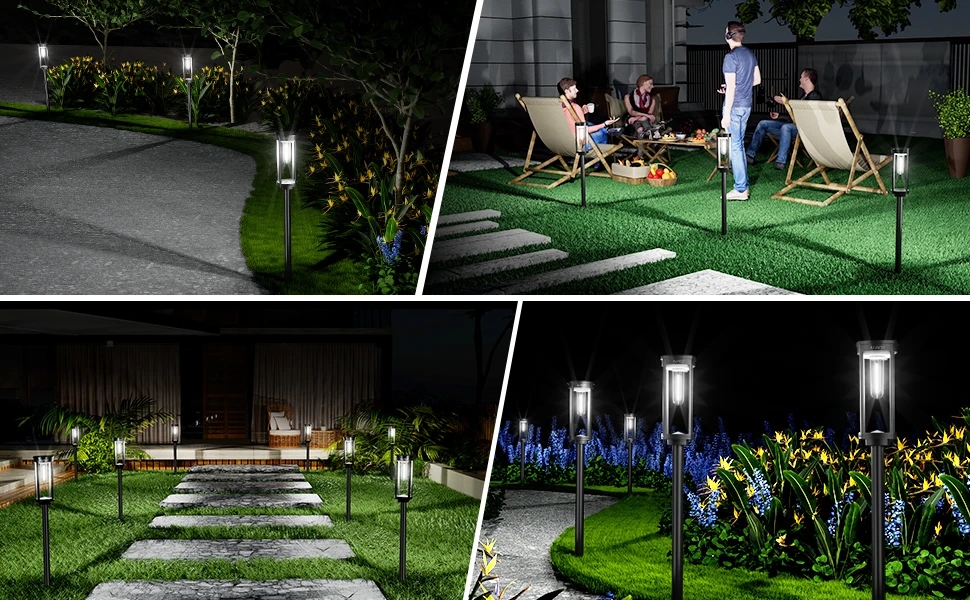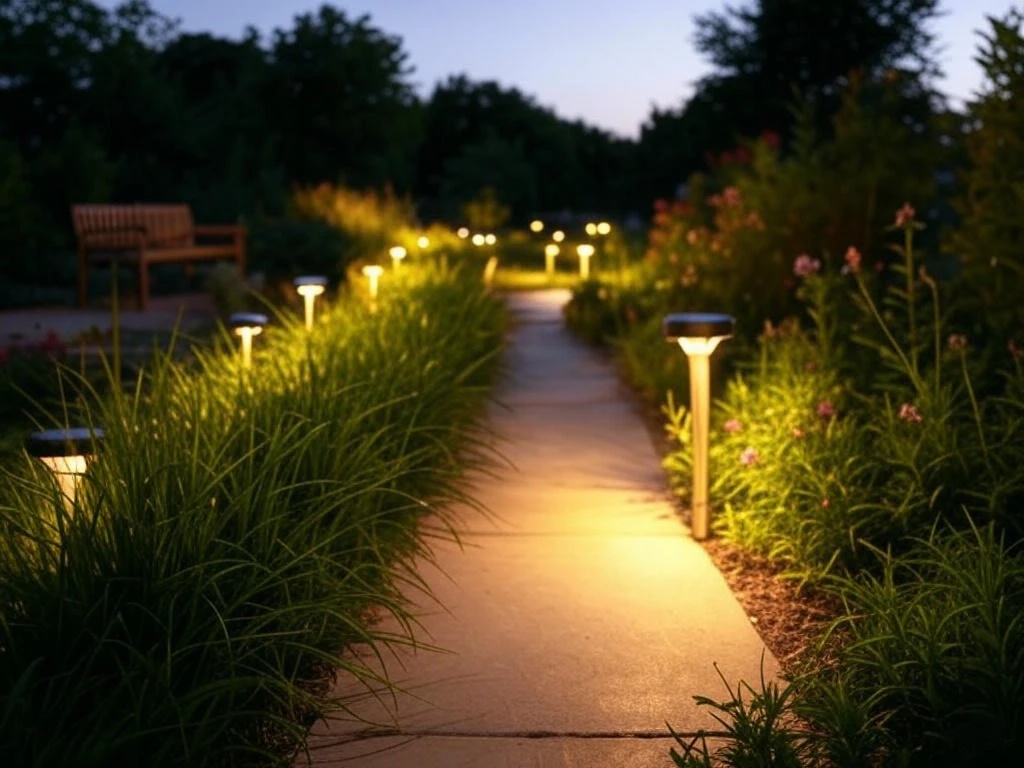Solar-powered flood lights are increasingly popular for illuminating outdoor spaces, offering an eco-friendly alternative to traditional lighting. These lights harness sunlight to provide bright, reliable illumination for driveways, patios, and gardens. However, like any technology, they come with advantages and limitations. This article provides a balanced analysis of the pros and cons of solar flood lights, helping you decide if they’re the right choice for your outdoor lighting needs. By examining energy savings, installation ease, durability, and potential drawbacks, we aim to equip you with the knowledge to make an informed decision.

Pros of Solar-Powered Flood Lights
Solar flood lights offer numerous benefits that make them an attractive option for homeowners and businesses. Here’s a closer look at their advantages.
Energy Savings and Eco-Friendliness
One of the biggest draws of solar-powered lights is their ability to deliver significant energy savings. By using sunlight to charge their batteries, these lights eliminate electricity costs and reduce reliance on fossil fuel-powered grids. According to SolarAid, solar lighting solutions can cut energy consumption by up to 30% compared to traditional lights. This makes solar flood lights a cornerstone of eco-friendly lighting, lowering your carbon footprint while keeping your outdoor spaces well-lit.
Easy Installation and Flexibility
Solar flood lights shine in terms of easy installation. Unlike wired floodlights, they require no electrical outlets or complex wiring, making them ideal for remote areas like backyards or sheds. Models like the Aootek Solar Motion Sensor Lights come with simple mounting brackets or stakes, allowing setup in minutes. This flexibility enables placement in areas where traditional lighting is impractical, a feature praised by users on platforms like Reddit for its convenience in solar security lighting applications.
Low Maintenance and Long-Term Savings
With minimal upkeep, solar outdoor lights are cost-effective over time. Their LED bulbs can last up to 50,000 hours, and solar light batteries typically need replacement only every 2–4 years. Regular cleaning of the solar panel with a soft cloth ensures optimal solar energy capture. While initial costs range from $20 to $200, the absence of operational expenses makes solar flood lights a budget-friendly choice, as noted by homeowners on Amazon reviews who appreciate the long-term savings.
Enhanced Security Features
Many solar flood lights incorporate motion sensor technology, which activates the light only when movement is detected, conserving battery life and enhancing security. For instance, the LEPOWER Solar LED Security Light offers a 72-foot detection range, deterring intruders by illuminating dark areas. Users on Home Depot’s website highlight the reliability of motion-activated lighting, noting its effectiveness for driveways and entryways, providing peace of mind without constant energy use.
Versatile Design Options
Solar flood lights come in various styles, from sleek, modern designs to traditional looks, allowing you to match your outdoor lighting design to your aesthetic. Adjustable heads, like those on the Otdair Triple-Head Solar Flood Light, provide customizable light coverage, making them suitable for security lighting, pathway illumination, or highlighting garden features. This versatility appeals to users seeking both functionality and style in their solar outdoor lighting.
Cons of Solar-Powered Flood Lights
Despite their benefits, solar flood lights have limitations that may affect their suitability for certain applications. Understanding these drawbacks is key to making an informed choice.
Dependence on Sunlight
The performance of solar-powered flood lights relies heavily on sunlight availability. In cloudy regions or areas with limited daylight, such as during winter, solar light performance can suffer. Low sunlight may lead to shorter runtimes or dimmer illumination, as noted by users in northern climates on Reddit’s r/HomeImprovement. Lights with high-capacity batteries (e.g., 2400 mAh) or efficient solar panels, like monocrystalline models, can mitigate this, but performance may still be inconsistent in low-light conditions.
Initial Cost
While solar flood lights save money long-term, their upfront cost can be higher than traditional floodlights. Basic models like the Otdair start at $30, but high-end options like the Werise 400-Watt Solar Street Light can cost $150 or more. Some Amazon reviewers mention that the initial investment feels steep, especially for large properties requiring multiple lights. However, energy savings often offset this over time, particularly for models with durable solar light components.
Limited Brightness for Large Areas
Solar light brightness varies, with most solar flood lights ranging from 200 to 5000 lumens. While this is sufficient for small to medium spaces, large areas like commercial lots may require multiple units or higher-lumen models (e.g., RuggedGrade’s 5000-lumen light). Users on SolarReviews note that lower-lumen models can appear dim for expansive driveways, requiring careful planning to achieve adequate light coverage.
Battery Degradation Over Time
Solar light batteries, typically NiMH or Li-ion, degrade after 2–4 years, reducing runtime and brightness. Replacing them costs $5–$20, and improper disposal can harm the environment, as highlighted by SolarAid’s recycling initiatives. Some users report frustration with battery replacement on models with non-standard sizes, emphasizing the need to choose lights with accessible solar light components from brands like Gama Sonic.
Potential for Weather-Related Issues
While most solar flood lights are built with solar light durability in mind, extreme weather can pose challenges. Heavy snow or debris can cover solar panels, reducing charging efficiency. Although IP65 or IP67 ratings ensure waterproofing, prolonged exposure to harsh conditions may lead to corrosion or damage, as noted by some Lowe’s reviewers. Regular maintenance, such as cleaning panels, is essential to maintain solar energy capture.
Balancing Pros and Cons: Is a Solar Flood Light Right for You?
To decide if solar-powered flood lights suit your needs, consider your priorities and environment:
- Location and Sunlight: If your area receives ample sunlight (6–8 hours daily), solar flood lights are highly effective. For cloudy regions, opt for models with high-capacity batteries or efficient solar panels.
- Purpose: For security lighting, prioritize motion sensor lights with 800–2000 lumens. For ambiance, 200–500 lumens suffice for patios or gardens.
- Budget: If upfront costs are a concern, start with affordable options like Aootek ($30) and scale up as needed. Long-term energy savings justify the investment.
- Maintenance Commitment: If you’re willing to clean solar panels and replace batteries periodically, solar flood lights are low-maintenance. Otherwise, consider wired alternatives.

Tips for Choosing and Maintaining Solar Flood Lights
To maximize the benefits of solar flood lights, follow these practical tips:
- Check Lumens: Select solar light brightness based on your needs—800+ lumens for security, 200–500 for decorative purposes.
- Prioritize Durability: Choose IP65 or higher-rated lights for solar light durability in harsh weather.
- Optimize Placement: Position solar panels in direct sunlight, avoiding shade, to ensure efficient solar energy capture.
- Clean Regularly: Wipe panels every 1–2 months to maintain solar light performance.
- Read Reviews: Platforms like Amazon and Home Depot offer insights into reliability and motion sensor technology performance.
Top Product Recommendations
Based on performance, durability, and user feedback, here are three standout solar flood lights:
- Aootek Solar Motion Sensor Lights ($30, 800–1200 lumens): Affordable, reliable, and versatile with three adjustable heads. Ideal for solar security lighting.
- LEPOWER Solar LED Security Light ($40, 1600 lumens): Offers long-range motion detection and customizable settings for mid-sized spaces.
- RuggedGrade High Power Solar Flood Light ($100, 1000–5000 lumens): Perfect for large areas, with robust construction for commercial solar lighting.
Where to Buy Solar Flood Lights
Purchase solar-powered flood lights from trusted retailers:
- Amazon: Wide selection, including Aootek and LEPOWER, with user reviews ($20–$50).
- Home Depot: Stocks durable brands like Beyond Solar ($30–$100).
- Lowe’s: Offers solar security lights from Bell+Howell ($25–$80).
- Outdoor Solar Store: Specializes in commercial solar lighting with warranties ($50–$200).
Conclusion
Solar-powered flood lights offer a compelling mix of energy savings, easy installation, and solar light durability, making them ideal for security lighting and decorative applications. However, their dependence on sunlight, initial cost, and potential battery degradation require careful consideration. By weighing the pros and cons of solar flood lights and choosing models that match your sunlight availability and lighting needs, you can create a safe, sustainable, and stunning outdoor space. Explore top products like Aootek or LEPOWER, and enjoy the benefits of eco-friendly lighting that enhances both functionality and aesthetics.


Leave a Reply